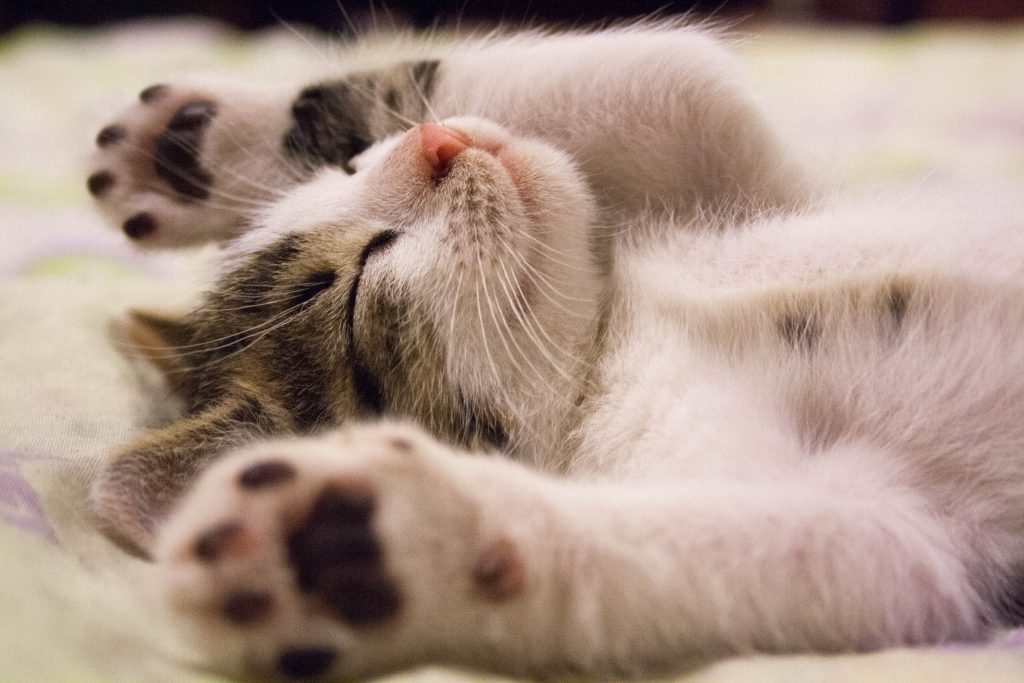Cats are fiercely independent creatures. They can also be mysterious sometimes. As a result, it can be difficult for furparents to tell the difference between a healthy and happy cat and a sick cat.
That’s why it’s important for cat owners to understand the signs and symptoms of common cat diseases, such as intestinal parasites, upper respiratory infections, urinary tract infections and more. While cats are good at self-maintenance, they aren’t 100 percent immune to illnesses.
Keep your feline in good condition by recognizing the signs of cat illnesses.
What Are The Most Common Cat Diseases?
Kidney Disease
The kidneys regulate water and blood levels and filter out waste. If there is a deterioration or breakdown in your cat’s kidneys, they can develop chronic kidney disease or acute renal failure. There is no cure for chronic kidney disease, but early detection and proper care ensure your furbabies live a high-quality life.
Kittens can be born with kidney disease. As they get older, their kidneys will start to fail. Blockages, trauma, infections or ingesting poison can also cause kidney problems. If left untreated, the disease can cause other health problems.
Common signs of kidney disease include:
- Cloudy or bloody urine
- Diarrhea
- Vomiting
- A dry coat
- Frequent drinking of water
- Weight loss
- Frequent urination
Dental Disease
According to the Cornell Feline Health Center, between 50 percent and 90 percent of cats over the age of four suffer from dental diseases like tooth resorption, periodontitis and gingivitis. Fortunately, most dental diseases can be treated or prevented with proper care.
Here are some of the most common dental diseases in cats.
- Tooth resorption. This often happens inside the structure of a broken tooth. The causes of tooth resorption are unknown but it remains one of the leading reasons for tooth loss in cats.
- Gingivitis. This condition triggers painful inflammation of the gums due to plaque buildup. Symptoms of gingivitis include swelling, redness and bleeding gums.
- Periodontitis. If gingivitis is left untreated, it can lead to periodontitis. This happens when there is damage to the bone that supports the teeth or the gums. Symptoms of periodontitis include drooling and halitosis.
Feline Leukemia Virus (FeLV)
Feline leukemia virus (also known as FeLV) is a cancer-causing virus that is spread through a cat’s urine, feces, blood or saliva. According to Alley Cat Allies, most cats get FeLV through contact with other infected cats or from their infected mothers. FeLV weakens the immune system, which can cause severe anemia. This makes your cat vulnerable to other illnesses.
An infected cat often has the following symptoms:
- Loss of appetite
- Weight loss
- Persistent fever
- Urinary tract infections, respiratory illnesses, skin infections
- Diarrhea
- Eye conditions
- Seizures
Cancer
Cats are prone to lymphoma, but they can still get sick from other types of cancers. While the appearance of a tumor often indicates cancer, it’s not the only symptom of cancer (and not all tumors are cancerous). Most cases of feline cancer can go unnoticed so visiting your veterinarian for tests is important to improve treatment outcomes.
Symptoms of feline lymphoma include the following:
- Vomiting
- Diarrhea
- Anorexia
- Weight loss
Cats who tested positive for FeLV have a higher risk of developing cancer. Other factors like exposure to secondhand smoke and diet are also risk factors.
Obesity
A cat weighing 20 percent more than its ideal weight is already obese. Feline obesity can shorten your furbaby’s lifespan, as well as make them more susceptible to the following health problems:
- Heart disease
- Cancer
- Joint problems
- Diabetes
Rabies
In the United States, cats are the most common domesticated pets affected by rabies. If your cat is bitten by a rabid animal (it can be another cat, a stray cat or others), your cat will experience neuromuscular effects and behavioral changes.
Rabies vaccinations protect your cat from rabies. Keep your pet’s vaccinations up to date. Also, keep your cats indoors to prevent them from being bitten.
Eye Problems

Eye problems in cats are caused by different things, which can include retinal disease, inflammation, trauma, glaucoma, cataracts and corneal ulcer. A few symptoms that indicate your cat is suffering from eye problems include:
- Gunk in the corners of the eye
- White or red eyelid linings
- Cloudiness
- Tear-stained fur
- Watery eyes
- Pawing at the eye
Unless you know the cause of your cat’s eye problems, there isn’t much you can do other than visiting your veterinarian. All eye problems should be considered emergencies.
Fleas
Fleas are common in all pets. It’s also one that you can easily treat. Your cat most likely has fleas if they have:
- Hot spots or skin infections
- Hair loss
- Irritated or red skin
- Frequent licking
- Flea dirt on the skin
- Constant scratching
Cats are the most mysterious of house pets. They’re so mysterious, you wouldn’t know if they’re sick or not. To keep them healthy, always watch out for symptoms and visit your veterinarian.

